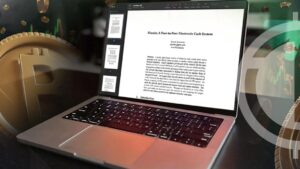
The EUR/USD pair experienced a significant surge, approaching the 1.0820 level, following the release of United States Producer Price Index (PPI) data, which showed a wider-than-expected deflationary trend. The monthly headline PPI contracted by 0.3% in May, surpassing the market’s anticipation of a 0.1% contraction. It is noteworthy that April witnessed a growth rate of 0.2%. Furthermore, the annualized headline PPI has softened to 1.1%, falling short of the consensus estimate of 1.5% and the previous release of 2.3%.
Michaël van de Poppe, a prominent crypto trader, has shared the news in his Twitter thread about the realization of PPI:
News Time
— Michaël van de Poppe (@CryptoMichNL) June 14, 2023
PPI: 1.1% realised, while 1.5% expected.
A drop from 2.3% to 1.1% and the LOWEST number since February 2021.
Core also dropping towards 2.8% from 3.2% and MoM PPI dropping at 0.3%.
Good signs for a potential pause or the end of the hiking policy.
In contrast, the US monthly core PPI maintained its expected pace of 0.2%. However, the annualized core PPI decelerated to 2.8%, falling below the market’s expectations of 2.9% and the previous release of 3.1%.
The significantly weak PPI figures show the impact of declining oil prices. Companies have passed on the effects of the sharp decline in gasoline prices to end consumers, as there have been no signs of a general slowdown in demand thus far.
The deceleration in PPI, combined with soft inflation, easing labor market conditions, and weak economic activities, strengthens the case for the Federal Reserve (Fed) to consider pausing interest rate hikes. Consequently, the US Dollar Index (DXY) has faced substantial selling pressure following the softer-than-anticipated data, causing it to drop below the critical support level of 103.00.
Meanwhile, attention is focused on the European Central Bank (ECB) and its upcoming interest rate decision. Market participants eagerly await ECB President Christine Lagarde’s announcement regarding a potential 25 basis points (bps) increase, bringing interest rates to 4%, as part of efforts to combat inflation rates above 6%.
Economists at Danske Bank suggest that a potential pause by the Fed could present short-term upside risks for the EUR/USD pair. However, they maintain a bearish view on the cross for the second half of CY2023.
As the market digests these developments, investors closely monitor both central banks’ decisions and their impact on the EUR/USD exchange rate, anticipating potential further volatility in the near future.













